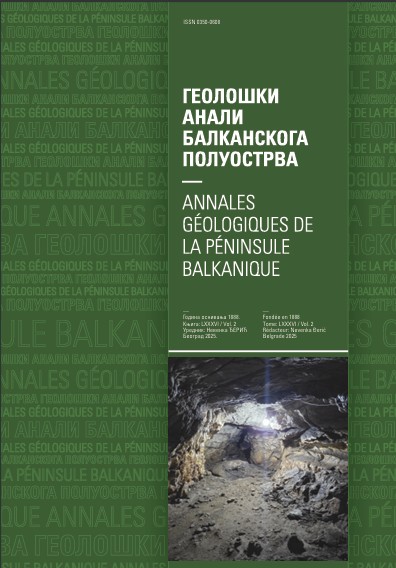Plitkovodni siliciklastiti ordovicijuma Homoljskih planina, Istočna Srbija
Ordovician shallow-sea siliciclastics of Homolje Mountains, Eastern Serbia (I)
Abstract
The Ordovician time-stratigraphic unit is represented in Homolje mountains by shallow-sea metaclastics which formed through three sedimentation cycles. The earlier two correspond to the Lower or Lower and Middle Ordovician and the later one to the Upper Ordovician. This work describes sedimentary rocks of the earlier two cycles. Rocks of the earliest cycle are transgressive over Upper Proterozoic rocks of the greenschist facies. These rocks are immature, deposited in an offshore area, and contain Lower Ordovician acritarchs. The thickness of the rocks is about 130 metres. Deposits of the following cycle are transgressive over the former and the preexisting rocks of the greenschist facies. These are mature quartzose metasiltstones and argillaceous schists, violet quartzose metasandstones, metasubarkoses which characterize dominantly sedimentation on a shelf. Their thickness is about 645 metres. The first member (b) of quartzose metasandstones, about 100 metres thick, bears Lower Ordovician acritarchs.
Copyright (c) 2024 Geološki anali Balkanskoga poluostrva

This work is licensed under a Creative Commons Attribution 4.0 International License.










